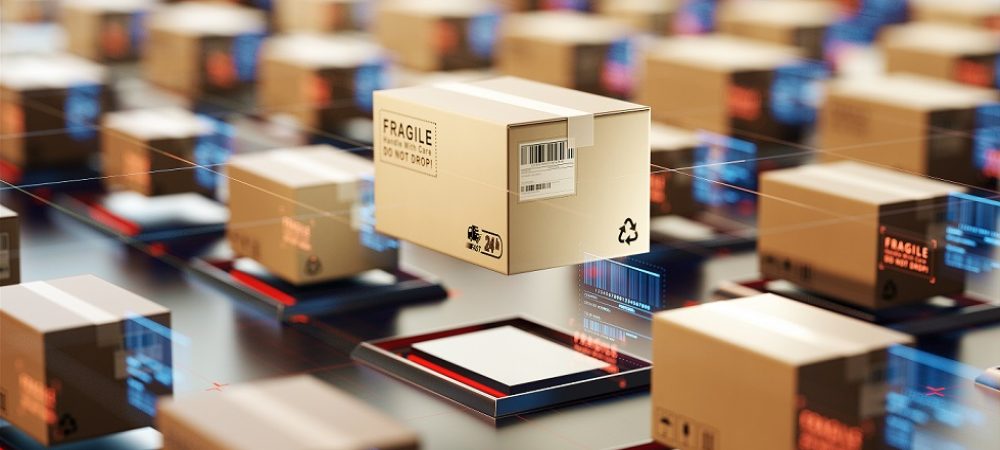Nabil Malouli, Global VP of e-Commerce, DHL, tells Intelligent CIO how digitalization and automation impact the logistics sector and how e-commerce will change in the years to come. He explains how the logistics industry is at the center of Digital Transformation and discusses deploying digitalization on a global scale.

Warehouses, ports and airports already feel like ways to make merchandise distribution processes more efficient, safe and dependable globally. Meanwhile, improving the digital channels for purchasing products makes life even easier for buyers.
This could be described as a ‘discreet revolution’ because, although the process is evident and has an extremely significant impact on both companies and customers, it has remained in the background and has continued to be low-profile.
However, it is inevitable to recognize that because of the pandemic, digitalization, automation technologies and robotization were massively accelerated. This is something we should be grateful for since without more efficient logistics, the impact of the global crisis would have been even more significant.
Intelligent CIO spoke with Florida-based Nabil Malouli, Global VP of e-commerce, DHL, to share his thoughts on the use of technology in the logistics sector.
How long have you been in the industry?
I have been in the industry for 14 years and I think we have had the most interesting time in the last 18 months. Logistics is at the center of this Digital Transformation that companies are experiencing due to COVID-19.
How have logistics companies been both victims and beneficiaries of the pandemic?
Before the pandemic started in the Americas, we already saw the advancing wave through Europe and we were prepared. We saw that things were more complicated in Asia since January and February last year. But no matter how much one prepared, no one could plan the timing, impact, scale and consequences of the pandemic entirely.
How was the process of digitizing service centers on a global scale?
We have been speculating on the issue of digitization for several years. We have more than 2,000 projects at the corporate level that include robotics, autonomous vehicles, AI and AR.
Different applications and technologies can help us in the logistics world depending on the intention.
What we do is share the information regarding research and development in the corporation’s sites. Apart from this, we have three innovation centers where we have the antennas and the brain of innovation in the corporation to improve the ecosystem, share knowledge and facilitate new entrepreneurs, and we include sustainability issues where we do a lot of development.
How do you go about making the most of robotics and automation in the warehouse?
There are two primary use cases where we see a lot of ROI and interest from the market. One is flexible automation, which includes any innovative technology that you can develop without redesigning or rebuilding the warehouses and the stores because many developments apply to warehouses. We may use it in retail and manufacturing.
What scares many entrepreneurs is the vision of the future especially when investing five, 10, one hundred or two hundred million dollars in warehouses. However, we have managed to support that figure. The question is about knowing how long it takes to recover this investment. A business’s outlook can change within the next 20 years.
The second issue is collaborative robotics, which is not about replacing people but about helping people with difficult and repetitive tasks that can generate human error.
An example of this is the handling of heavy products. Currently, people must go and load the products in vehicles, among other activities. However, this would be different if an autonomous platform helps him or her load the products.
There are also solutions for route planning, for reducing times and also for the use of sustainable packaging.
How are you directing innovation towards transportation to make it more efficient and cleaner?
It depends on the geographical area and the degree of use. For example, the city of Dallas recently authorized drones for commercial transportation in the US. Other previous activities happened remotely or in small cities.
We focus on use cases that may appear to be the most interesting, although sometimes they are not the best use cases for society as a whole. However, drones are a good example of a technology publicized for one use – making deliveries – but we use them for many other purposes where there is an immediate benefit for society.
Looking at all these changes, we see that there is not only a technological revolution occurring but also a psychological one in adapting to changing needs and the requirements of consumers.
In terms of the process of transactions, customers only see a purchase button at the final stage although many processes and technologies are entailed. How do you utilize the e-commerce layer from your perspective?
My life begins when the customer presses the shopping cart button on the site. There is a level of complexity in online business and it is important to understand what is going on. It goes from the purchase button to the inventory, the warehouse management system, the transportation and returns system, the user experience analysis, etc. Every increase generated in these processes impacts the entire chain.
An example is of a client who wants to improve delivery times to just two hours for every order, but his purchasing and administrative processes take 45 minutes, leaving just one hour and 15 minutes for the logistics process.
How can these processes be reduced to improve delivery times?
A business leader needs to think about how to transform the company and improve skills. If there are already technologies that are generating significant profits on a global scale that are not in use in the company, that is when it becomes a worry.
How can businesses overcome the crises regarding the shortage of containers and ships, as well as deal with concerns over energy?
These are three different themes and they have a significant impact. The container crisis and the supply crisis, in general, is related to COVID-19, which created an imbalance in the global supply chain since it needs to work like a machine and all its elements, which are ports, ships and customs, must be co-ordinated and run like clockwork.
The closure of plants and ports, combined with a boost in demand and an injection of cash by various countries, added to employees working from home, generates a series of problems that break the balance of the whole system.
Faced with supply chain issues, there will be a cycle of eight or 10 years that requires us to be more creative. The challenge is that we have countries like Vietnam or China where if a Covid case appears, they close everything.
Regarding the energy issue, to make processes more sustainable DHL has set itself the challenge of being carbon neutral by 2050. This is a difficult challenge because you transport on airplanes and trucks, among other things. We have announced an investment of EU 7,000 million for the sustainability issue over the next 10 years.
What other factors do you think can help tackle the environmental challenge?
The first step is about improving processes. We can do this by planning and using route management. We use Artificial Intelligence and Machine Learning, among other things, to define everything from packaging to determining the perfect route for airplanes.
It is not just about going electric. Even if we use electric vehicles, we can still generate congestion and cause pollution. Thus, we must have a holistic vision to operate in an environmentally friendly way.
What will the business outlook look like towards the end of the decade?
We are entering an exciting time. In the next 10 years, we will see technological advances that will impact companies. Opportunities are opening for companies to do things differently and better. Access to technology was never as cheap as it is today. With telecommunications and access to global talent, companies are more willing to look for new talent anywhere, which will bring a lot of innovation.
But online business including online sales is the most disruptive scene there is now. We see that everything is digitized, and the content analyzed, looking up where the user spends time and measuring factors on digital platforms. It is required to go towards differentiation models to analyze and deliver innovative solutions.
You also need to avoid using past successes to predict the future. One of my favorite sayings reminds me that, just before the Covid pandemic started, I met with one of my largest clients in Latin America. He said: “Why should I invest in e-commerce if it’s just 2% of our income? It is much more complex and less profitable than our physical channel.”
Three months later, he will have reconsidered his comment.


